
The Enchanting Pink Granite Coast of France
Discover the breathtaking beauty and unique pink granite formations of Côte de Granit Rose in Brittany, France, a perfect blend of natural wonder and rich Breton culture.
The Côte de Granit Rose, or the Pink Granite Coast, is one of France's most stunning natural wonders. Located in Brittany, this coastal gem is famed for its unique pink-hued granite formations that have been sculpted by the elements over millennia. The coast stretches over 30 kilometers, offering breathtaking views of rugged cliffs, sandy beaches, and sparkling turquoise waters. Visitors to the Côte de Granit Rose can enjoy scenic coastal walks, with the Sentier des Douaniers (Customs Officers’ Path) being one of the most popular trails. This well-marked path provides panoramic vistas and leads explorers through charming seaside villages such as Ploumanac'h, which has been voted one of France's most beautiful villages. Along the way, you will encounter fascinating rock formations named after their shapes, such as the ‘Witch’s Face’ and the ‘Napoleon’s Hat’. Aside from its natural beauty, the region offers a rich cultural experience. Discover the local Breton culture through its cuisine, festivals, and traditional music. The nearby town of Perros-Guirec is a great base for visitors, offering a range of accommodations, restaurants, and shops. For those interested in wildlife, the Sept-Îles archipelago is a must-visit; it is a protected bird reserve home to puffins, gannets, and seals. Whether you are a nature lover, a photography enthusiast, or simply seeking a peaceful retreat, the Côte de Granit Rose promises an unforgettable experience.
Local tips in Côte de Granit Rose
- Visit during low tide to access hidden coves and rock formations that are not visible at high tide.
- Wear comfortable walking shoes for the Sentier des Douaniers trail to fully enjoy the scenic coastal hikes.
- Bring binoculars for birdwatching at the Sept-Îles archipelago, especially if you are interested in spotting puffins.
- Try local Breton specialties such as crêpes, galettes, and fresh seafood in the nearby villages.
- Check the weather forecast before planning your visit, as the region can be quite windy and rainy, especially in the off-season.
The Enchanting Pink Granite Coast of France
The Côte de Granit Rose, or the Pink Granite Coast, is one of France's most stunning natural wonders. Located in Brittany, this coastal gem is famed for its unique pink-hued granite formations that have been sculpted by the elements over millennia. The coast stretches over 30 kilometers, offering breathtaking views of rugged cliffs, sandy beaches, and sparkling turquoise waters. Visitors to the Côte de Granit Rose can enjoy scenic coastal walks, with the Sentier des Douaniers (Customs Officers’ Path) being one of the most popular trails. This well-marked path provides panoramic vistas and leads explorers through charming seaside villages such as Ploumanac'h, which has been voted one of France's most beautiful villages. Along the way, you will encounter fascinating rock formations named after their shapes, such as the ‘Witch’s Face’ and the ‘Napoleon’s Hat’. Aside from its natural beauty, the region offers a rich cultural experience. Discover the local Breton culture through its cuisine, festivals, and traditional music. The nearby town of Perros-Guirec is a great base for visitors, offering a range of accommodations, restaurants, and shops. For those interested in wildlife, the Sept-Îles archipelago is a must-visit; it is a protected bird reserve home to puffins, gannets, and seals. Whether you are a nature lover, a photography enthusiast, or simply seeking a peaceful retreat, the Côte de Granit Rose promises an unforgettable experience.
When is the best time to go to Côte de Granit Rose?
Iconic landmarks you can’t miss
Phare de Men Ruz
Explore the breathtaking Phare de Men Ruz lighthouse in Perros-Guirec, a stunning cultural landmark on Brittany's pink granite coast.

Trestraou beach
Discover Trestraou Beach in Perros-Guirec: a beautiful blend of sun, sand, and stunning coastal views, perfect for relaxation and adventure.

Parc des sculptures Christian Gad et Daniel Chhé
Explore the enchanting Parc des Sculptures Christian Gad et Daniel Chhé, where art and nature unite in breathtaking coastal surroundings.

Le gouffre de Plougrescant
Experience the breathtaking beauty of Le Gouffre de Plougrescant, a stunning coastal gem in Brittany, France, where nature's artistry meets the Atlantic Ocean.

Aquarium Trégastel
Explore the vibrant marine life at Aquarium Trégastel, a top tourist attraction showcasing the wonders of the ocean in a breathtaking coastal setting.

Plage de Tourony
Experience the enchanting beauty of Plage de Tourony, a top public beach in Trégastel, known for its golden sands and stunning coastal views.

Castel Beau Site
Discover the tranquil beauty of Castel Beau Site, where luxury meets the stunning landscapes of Perros-Guirec in Brittany, France.

Beach Goas Lagorn
Explore the serene beauty of Beach Goas Lagorn – a perfect retreat for relaxation, family fun, and nature’s splendor on the stunning Brittany coast.

Plage du Coz-Pors
Explore Plage du Coz-Pors: A scenic public beach in Trégastel, perfect for relaxation, swimming, and stunning coastal views.

Plage Ile Renote
Experience the breathtaking beauty and tranquility of Plage Ile Renote in Trégastel, a must-visit beach destination on the stunning French coast.

Plage de Trégastel
Experience the stunning beauty of Plage de Trégastel, a captivating beach and observation deck along France's pink granite coast.

Côte de granite rose
Explore the stunning Côte de Granite Rose, a natural wonder of pink granite cliffs and breathtaking coastal views in Brittany, France.

Le menhir de saint Uzec
Explore the ancient wonders and serene beauty of Le Menhir de Saint Uzec, a historical landmark in Pleumeur-Bodou that connects you to Brittany's rich heritage.

The beach Goas Treiz
Discover the beauty of Goas Treiz, a stunning public beach in Trebeurden, perfect for relaxation, adventure, and unforgettable sunsets.

Plage de Pors Gelen
Discover the serene beauty of Plage de Pors Gelen, a picturesque public beach in Pleumeur-Bodou, perfect for relaxation and water sports.

Unmissable attractions to see
Phare de Men Ruz
Discover the breathtaking Phare de Men Ruz in Perros-Guirec, a stunning coastal lighthouse offering iconic views and rich maritime history.

Trestraou beach
Discover the breathtaking beauty of Trestraou Beach, a family-friendly public beach in Perros-Guirec, perfect for a day of sun and sea.
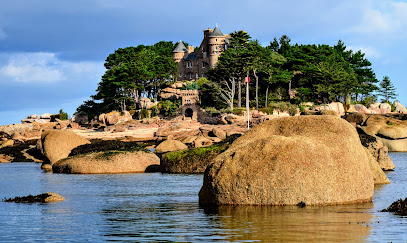
Parc des sculptures Christian Gad et Daniel Chhé
Discover the enchanting Parc des Sculptures Christian Gad et Daniel Chhé, where monumental art and nature meet in a breathtaking coastal setting.

Le gouffre de Plougrescant
Experience the breathtaking beauty of Le Gouffre de Plougrescant, a stunning coastal attraction in Brittany, France, where nature meets artistry.

Aquarium Trégastel
Discover the enchanting underwater world at Aquarium Trégastel, where marine life comes alive in stunning displays and educational exhibits.

Plage de Tourony
Discover the enchanting Plage de Tourony in Trégastel, a public beach paradise with golden sands and breathtaking coastal views.

Station LPO Ile Grande
Explore the beauty of wildlife and nature at Station LPO Ile Grande, a scenic preserve and educational hub in Pleumeur-Bodou, France.

Beach Goas Lagorn
Explore the serene beauty of Beach Goas Lagorn, a public beach in Lannion, France, perfect for relaxation and seaside adventures.

Plage Ile Renote
Experience the tranquil beauty of Plage Ile Renote, a stunning beach in Trégastel, Brittany, where golden sands meet crystal-clear waters.
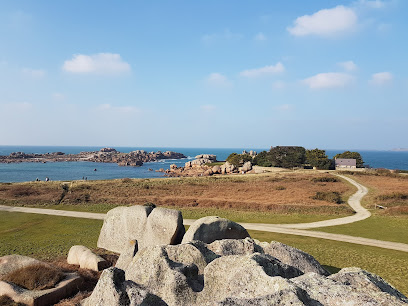
Pors Rolland
Discover the beauty and tranquility of Pors Rolland, a stunning coastal promenade perfect for relaxation and scenic views in France.

Côte de granite rose
Explore the enchanting Côte de Granit Rose, where pink granite cliffs meet the Atlantic waves, creating a stunning coastal paradise in Brittany, France.

Le menhir de saint Uzec
Explore the ancient Menhir de Saint Uzec, a breathtaking historical landmark in Pleumeur-Bodou, revealing the mysteries of Brittany's prehistoric past.

Pointe de l'Ile Renote
Experience the breathtaking coastal beauty and natural wonders at Pointe de l'Ile Renote in Trégastel, Brittany's scenic paradise.

Sentier des douaniers
Discover the breathtaking views and rich maritime history along the Sentier des Douaniers, the premier hiking trail in Perros-Guirec, Brittany.

La plage des Curés
Discover the stunning La Plage des Curés in Trégastel, a perfect blend of sun, sand, and scenic views on the Brittany coast.

Essential places to dine
Le Mao
Experience exquisite seafood dishes at Le Mao in Perros-Guirec—where fresh flavors meet stunning coastal views.

Restaurant l'Ardoise
Experience authentic French cuisine at Restaurant l'Ardoise in Perros-Guirec – a perfect blend of flavor and ambiance awaits.

Le Coste Mor
Experience exquisite seafood dining at Le Coste Mor in Perros-Guirec – where fresh ingredients meet stunning coastal views.

La Suite
Experience exquisite French cuisine at La Suite with stunning beach views and a vibrant bar atmosphere in Perros-Guirec.

La Plage
Discover La Plage in Perros-Guirec: A delightful seafood restaurant offering fresh flavors and breathtaking coastal views.

Ty Breizh
Experience authentic Breton cuisine at Ty Breizh in Perros-Guirec - indulge in delicious crêpes and French specialties.

Restaurant Le Ker Bleu
Experience authentic Breton cuisine with stunning coastal views at Restaurant Le Ker Bleu in Perros-Guirec.

Le Transat Restaurant
Discover authentic French cuisine at Le Transat Restaurant in Trégastel - where fresh seafood meets breathtaking coastal views.

Le Trestrignel
Discover exquisite dining at Le Trestrignel in Perros-Guirec – where French tradition meets modern culinary innovation with stunning coastal views.

Nomad Crêperie Trégastel
Experience authentic Breton cuisine at Nomad Crêperie Trégastel - where tradition meets flavor in every delicious crêpe.

La Grève Blanche BAG II
Discover La Grève Blanche BAG II: A coastal gem offering exquisite French cuisine and vibrant bar experiences in beautiful Trégastel.
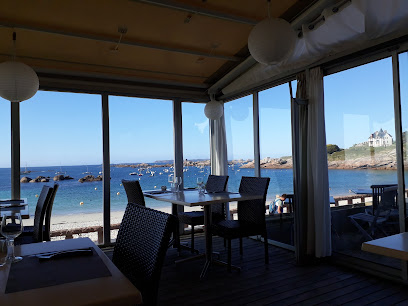
DIGOR KALON
Experience authentic French cuisine at DIGOR KALON in Perros-Guirec - where delightful flavors meet warm hospitality.

bistrot de la Rade (ancien Le Bleu Marin)
Experience exquisite French cuisine at Bistrot de la Rade in Perros-Guirec – a seafood lover's paradise with stunning coastal views.

Le Ker Louis
Experience authentic Brittany cuisine at Le Ker Louis in Perros-Guirec - where every dish celebrates local flavors amidst stunning coastal views.

Auberge de la Vieille Eglise
Experience authentic French cuisine at Auberge de la Vieille Eglise in Trégastel – where local flavors meet warm hospitality.

Markets, malls and hidden boutiques
GALLERIES KER Iliz
Explore the unique treasures of GALLERIES KER Iliz, the perfect gift shop in Perros-Guirec for authentic souvenirs and local crafts.

Mon p'tit pull rayé - Vêtements marins
Explore Mon p'tit pull rayé in Trégastel for unique marine-inspired fashion and local artisan souvenirs, capturing the spirit of Brittany.
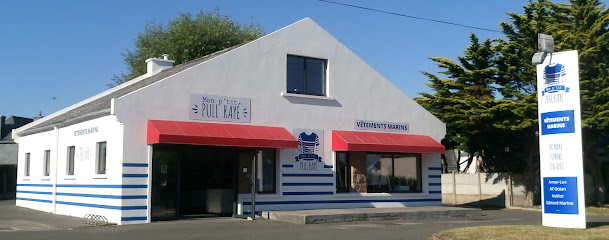
Avec des Pierres
Discover the charm of nature and craftsmanship at Avec des Pierres in Perros-Guirec, where unique rocks and exquisite jewelry await.

NOX
Explore NOX in Perros-Guirec for unique home goods, stylish outdoor furniture, and thoughtful corporate gifts that enhance your living space.
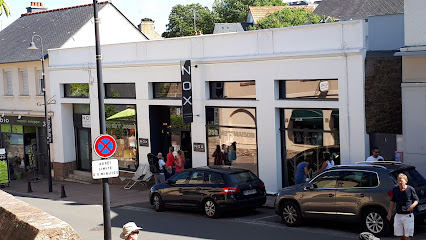
Les Pois sont Roz
Explore Les Pois sont Roz in Perros-Guirec for unique gifts that reflect Brittany's rich culture and artistry.

Surf Shop Zeus
Experience the thrill of surfing at Surf Shop Zeus in Perros-Guirec – your one-stop shop for surf gear and local surf culture.

Le Comptoir de Ploumanac'h
Explore unique handcrafted gifts and local treasures at Le Comptoir de Ploumanac'h in Perros-Guirec, Brittany's charming coastal gem.

La Maison DARNA concept-store & boutique déco
Explore La Maison DARNA in Perros-Guirec: A unique concept-store offering eclectic gifts, stylish clothing, and exquisite home décor.

All'Océan - Perros Guirec
Discover the essence of Breton fashion at All'Océan in Perros-Guirec, where style meets coastal charm for an unforgettable shopping experience.

Marino
Explore the stylish selection of Marino in Perros-Guirec, where local fashion meets coastal charm.

Les 11 Hermines
Experience the sweetness of Brittany at Les 11 Hermines, your go-to destination for gourmet gift baskets and local delicacies.

La Goélette
Discover unique fashion finds at La Goélette, a charming clothing store in Perros-Guirec, where coastal style meets local craftsmanship.

Gaonach Carole
Explore Gaonach Carole in Trégastel for unique gifts and local crafts that capture the spirit of Brittany.
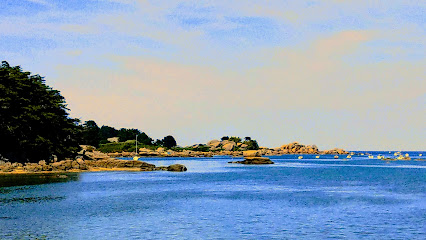
Debout Les Crabes
Discover unique gifts and home goods at Debout Les Crabes, a charming gift shop in Perros-Guirec, showcasing local artisanship and creativity.
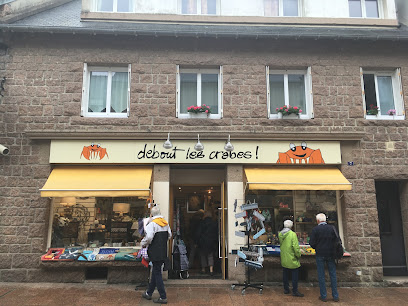
La Petite Fabrique
Explore La Petite Fabrique, a delightful gift shop in Perros-Guirec, offering unique souvenirs and local crafts that embody the charm of Brittany.

Essential bars & hidden hideouts
La Cabane Bambou's
Experience the vibrant nightlife and live music at La Cabane Bambou in Trébeurden, where every visit promises fun and relaxation.

La Grève Blanche BAG II
Experience the essence of French cuisine at La Grève Blanche BAG II in Trégastel, where every dish tells a story of local flavors and culinary excellence.

Le Britannia bar à bières.
Discover Le Britannia in Perros-Guirec, where local brews, live music, and a vibrant atmosphere come together for an unforgettable night out.

Cap O 'Bar
Discover the charm of Cap O'Bar in Perros-Guirec - a delightful bar tabac offering snacks, drinks, and local culture in a cozy setting.
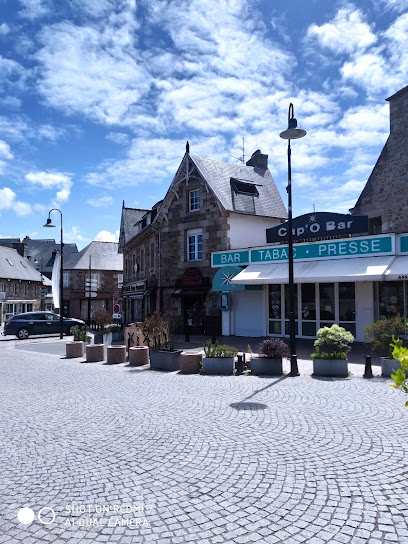
Bar Le Bahia
Experience the perfect blend of local cuisine and breathtaking views at Bar Le Bahia, your go-to bar and restaurant in Perros-Guirec.

Dockland Pub
Discover the lively Dockland Pub in Louannec, where great drinks, locals' warmth, and vibrant nightlife await you.

Bar L' Escale
Experience the charm of Bar L' Escale in Perros-Guirec, where cozy ambiance meets delightful drinks in a picturesque coastal setting.

Ty Mai
Discover Ty Mai, the charming bar in Trébeurden that offers a cozy atmosphere, local beverages, and a taste of Brittany's vibrant culture.

La Terrasse
Experience the perfect blend of local cuisine and coastal charm at La Terrasse in Perros-Guirec, your ideal getaway spot.

Perroz Sea Side Bar & Concept Store
Experience the charm of Perroz Sea Side Bar & Concept Store, where stunning beach views meet delicious drinks in the heart of Perros-Guirec.

Ty Jobic
Experience the charm of Brittany at Ty Jobic, a cozy bar in Perros-Guirec offering delightful drinks, snacks, and a warm atmosphere.

Bar de la Poste
Experience the warm hospitality and delightful drinks at Bar de la Poste, the perfect coastal retreat in Trébeurden.

Brasserie des 7 îles
Discover Brasserie des 7 îles in Trégastel, where handcrafted beers and delightful dishes come together in a charming coastal brewpub.

Le Roz' Top
Experience the vibrant atmosphere and stunning views at Le Roz' Top, the perfect bar in Perros-Guirec for relaxation and socializing.

Les Ajoncs d'Or
Discover the charm of Les Ajoncs d'Or, a cozy bar in Perros-Guirec, offering a taste of local culture and delightful beverages.

Local Phrases about Côte de Granit Rose
-
- HelloBonjour
[bohn-zhoor] - GoodbyeAu revoir
[oh ruh-vwahr] - YesOui
[wee] - NoNon
[nohn] - Please/You're welcomeS'il vous plaît / De rien
[seel voo pleh / duh ryen] - Thank youMerci
[mehr-see] - Excuse me/SorryExcusez-moi / Désolé
[ehk-skyoo-zay mwah / day-zoh-lay] - How are you?Comment ça va?
[koh-mohn sa vah] - Fine. And you?Bien. Et toi?
[byen. ay twah] - Do you speak English?Parlez-vous anglais?
[par-lay voo ahn-glay] - I don't understandJe ne comprends pas
[zhuh nuh kohm-prahn pah]
- HelloBonjour
-
- I'd like to see the menu, pleaseJe voudrais voir le menu, s'il vous plaît
[zhuh voo-dray vwahr luh muh-nyoo, seel voo pleh] - I don't eat meatJe ne mange pas de viande
[zhuh nuh mahnj pah duh vyand] - Cheers!Santé!
[sahn-tay] - I would like to pay, pleaseJe voudrais payer, s'il vous plaît
[zhuh voo-dray pay-ay, seel voo pleh]
- I'd like to see the menu, pleaseJe voudrais voir le menu, s'il vous plaît
-
- Help!Au secours!
[oh suh-coor] - Go away!Allez-vous en!
[ah-lay vooz ahn] - Call the Police!Appelez la police!
[ah-pay-lay lah poh-lees] - Call a doctor!Appelez un médecin!
[ah-pay-lay uh meh-deh-sahn] - I'm lostJe suis perdu
[zhuh swee pair-doo] - I'm illJe suis malade
[zhuh swee mah-lahd]
- Help!Au secours!
-
- I'd like to buy...Je voudrais acheter...
[zhuh voo-dray zah-shay...] - I'm just lookingJe regarde juste
[zhuh ruh-gard zhewst] - How much is it?Combien ça coûte?
[kohm-byen sah koot] - That's too expensiveC'est trop cher
[say troh shehr] - Can you lower the price?Pouvez-vous baisser le prix?
[poo-veh voo bay-say luh pree]
- I'd like to buy...Je voudrais acheter...
-
- What time is it?Quelle heure est-il?
[kell uh-ruh ay eel] - It's one o'clockIl est une heure
[eel ay oon uh-ruh] - Half past (10)Dix heures et demi
[dees ehr e ay duh-mee] - MorningMatin
[mah-tahn] - AfternoonAprès-midi
[ah-pray mee-dee] - EveningSoir
[swahr] - YesterdayHier
[yehr] - TodayAujourd'hui
[oh-zhoor-dwee] - TomorrowDemain
[duh-mahn] - 1Un
[uhn] - 2Deux
[duh] - 3Trois
[twah] - 4Quatre
[kat] - 5Cinq
[sank] - 6Six
[sees] - 7Sept
[sept] - 8Huit
[weet] - 9Neuf
[nuf] - 10Dix
[dees]
- What time is it?Quelle heure est-il?
-
- Where's a/the...?Où est un/le...?
[oo ay uh/luh] - What's the address?Quelle est l'adresse?
[kell ay lad-rehs] - Can you show me (on the map)?Pouvez-vous me montrer (sur la carte)?
[poo-veh voo muh mohn-tray (soor lah kart)] - When's the next (bus)?Quand est le prochain (bus)?
[kahn ay luh proh-shan (boos)] - A ticket (to ....)Un billet (pour ....)
[uhn bee-yay (poor)]
- Where's a/the...?Où est un/le...?
History of Côte de Granit Rose
-
The Côte de Granit Rose, or Pink Granite Coast, in Brittany, France, boasts a history that dates back to ancient times. The unique pink hue of the granite is attributed to its high feldspar content, which has been shaped and sculpted by natural forces over millions of years. This striking geological feature attracted early settlers, who left behind numerous megalithic structures, such as dolmens and menhirs, that still stand today as silent witnesses to their presence.
-
During the Roman era, the region that includes Côte de Granit Rose saw significant development as part of the Roman province of Gallia Lugdunensis. The Romans were drawn to the area's natural resources and strategic location. Evidence of Roman occupation includes remnants of roads, villas, and artifacts that have been uncovered in archaeological excavations. These findings suggest that the Romans not only exploited the natural resources but also contributed to the region's infrastructure and cultural landscape.
-
The Middle Ages brought significant changes to the Côte de Granit Rose. This period saw the construction of numerous castles and fortifications as local lords sought to protect their lands from Viking raids and other threats. One notable structure from this era is the Château de Costaérès, which stands on an island just off the coast. The castle's dramatic location and storied history make it a symbol of the region's medieval heritage.
-
The Côte de Granit Rose is dotted with religious landmarks that reflect the area's deep spiritual roots. During the 6th century, Saint Guirec, a Welsh monk, settled in the village of Ploumanac'h, establishing a small hermitage. The Oratory of Saint Guirec, a picturesque chapel built on the shore, commemorates his legacy. Pilgrims continue to visit this site, and local legends suggest that single women who place a pin in the statue of the saint will soon find a husband.
-
The Pink Granite Coast has a long-standing maritime tradition, deeply intertwined with the lives of its inhabitants. The region's natural harbors and abundant marine resources have supported fishing communities for centuries. The town of Perros-Guirec, with its bustling port, is a testament to this heritage. Maritime festivals and events, such as the annual Regatta of Perros-Guirec, celebrate the region's seafaring past and present, drawing visitors from near and far.
-
The breathtaking beauty of the Côte de Granit Rose has inspired countless artists over the years. In the late 19th and early 20th centuries, the region became a haven for painters, writers, and photographers seeking to capture its unique landscapes. The village of Trégastel, with its stunning rock formations and serene beaches, was particularly favored by artists. Today, the legacy of these creative souls can be seen in local galleries and museums, which showcase works that highlight the region's natural splendor.
-
In the 20th century, Côte de Granit Rose emerged as a popular tourist destination, attracting visitors with its scenic beauty, historical landmarks, and vibrant culture. The establishment of the Sentier des Douaniers, a coastal path, has allowed tourists to explore the rugged coastline and enjoy panoramic views. The region's commitment to preserving its natural and cultural heritage ensures that the Pink Granite Coast remains a cherished destination for future generations.
Côte de Granit Rose Essentials
-
Côte de Granit Rose is located in Brittany, France. The nearest major airport is Rennes–Saint-Jacques Airport (RNS), approximately 150 kilometers away. From Rennes, you can rent a car, take a bus, or catch a train to Lannion, the main town within Côte de Granit Rose. Alternatively, you can fly into Paris Charles de Gaulle Airport (CDG) and take a high-speed train (TGV) to Lannion.
-
Once in Côte de Granit Rose, you have several options for getting around. Renting a car is highly recommended for exploring the region at your own pace. Public buses connect major towns and attractions but may not run frequently. Biking is also a popular way to explore the scenic coastal paths. Taxis are available but can be expensive, especially for long distances.
-
The official currency in France is the Euro (EUR). Credit and debit cards are widely accepted in most hotels, restaurants, and shops. However, it is advisable to carry some cash, especially for small purchases, in rural areas, and at local markets. ATMs are available in Lannion and other larger towns within Côte de Granit Rose.
-
Côte de Granit Rose is generally a safe destination for tourists. However, as with any travel destination, it is prudent to take standard precautions. Avoid leaving valuables unattended and be cautious in crowded areas. There are no specific high-crime areas targeting tourists, but it is always best to stay aware of your surroundings.
-
In case of emergency, dial 112 for immediate assistance. The local police stations and medical facilities are well-equipped to handle emergencies. It is recommended to have travel insurance that covers medical emergencies. Pharmacies are available in Lannion and other towns for minor health issues and over-the-counter medications.
-
Fashion: Do dress comfortably and appropriately for coastal weather. Avoid overly casual attire when dining in upscale restaurants. Religion: Do respect local customs and traditions. While the region is not overly religious, modest attire is appreciated when visiting churches. Public Transport: Do validate your ticket before boarding local buses. Don’t be loud or disruptive while on public transport. Greetings: Do greet people with a friendly 'Bonjour' and a handshake. Eating & Drinking: Do try local delicacies such as crêpes and seafood. Don’t rush through meals; dining is a leisurely activity in France.
-
To experience Côte de Granit Rose like a local, visit the local markets and buy fresh seafood and regional products. Engage with locals, as they are often friendly and willing to share insights about the area. Don’t miss the stunning coastal walks and the picturesque town of Ploumanac'h. For a unique experience, take a boat tour to explore the Seven Islands Nature Reserve.
Trending Landmarks in Côte de Granit Rose
-
Phare de Men Ruz
-
Trestraou beach
-
Parc des sculptures Christian Gad et Daniel Chhé
-
Le gouffre de Plougrescant
-
Aquarium Trégastel
-
Plage de Tourony
-
Castel Beau Site
-
Beach Goas Lagorn
-
Plage du Coz-Pors
-
Plage Ile Renote
-
Plage de Trégastel
-
Côte de granite rose
-
Le menhir de saint Uzec
-
The beach Goas Treiz
-
Plage de Pors Gelen
Nearby Cities to Côte de Granit Rose
-
Things To Do in St. Saviour
-
Things To Do in St. Martin
-
Things To Do in St. Andrew
-
Things To Do in Castel
-
Things To Do in St. Peter Port
-
Things To Do in Vale
-
Things To Do in St. Sampson
-
Things To Do in St. Brelade
-
Things To Do in St. Ouen
-
Things To Do in St. Peter
-
Things To Do in St. Aubin
-
Things To Do in St. Anne
-
Things To Do in St. Lawrence
-
Things To Do in St. Helier
-
Things To Do in Saint-Malo










